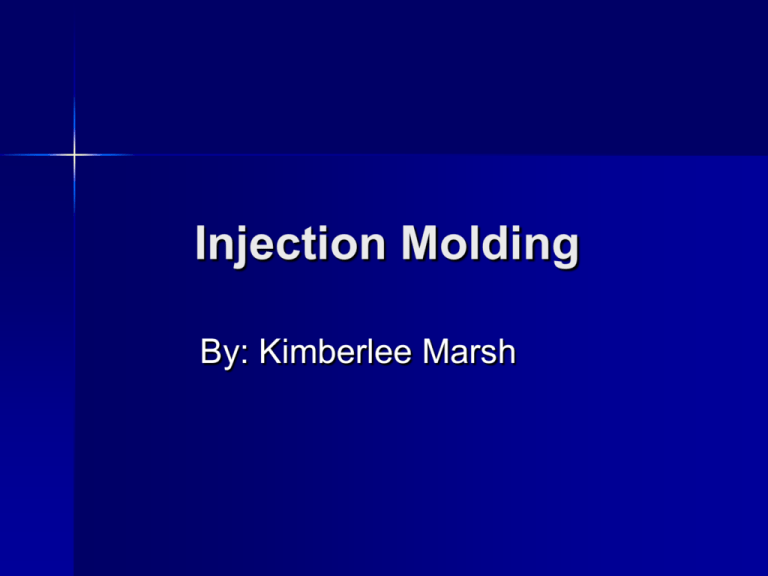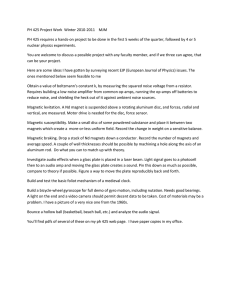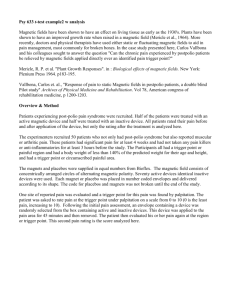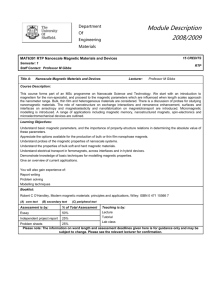Injection Molding
advertisement

Injection Molding By: Kimberlee Marsh Steps for Injection Molding Clamping Injection Cooling Mold-opening Ejection Materials Nylon Styrene Ethylene Pressure Calculation P=F/A EX: 10^2 mold 200 ton machine 200/10 = 20 tons/in^2 = 40 ksi Complications Burned or scorched parts Warpage Surface imperfections Incomplete cavity filling Advantages and Disadvantages High Production Tight Tolerancing Low Labor Costs Minimal Scrap No Part Finishing Expensive Equipment Running Costs References -http://en.wikipedia.org/wiki/Injection_molding -http://www.efunda.com/ -http://claymore.engineer.gvsu.edu/jackheod/manufact/manufact-213.html Magnets & Electromagnets By: Jennifer Hensley History of Magnets The ancient Greeks and Chinese are credited as the first to find and use a naturally occurring iron ore -magnetite- attracts other materials containing iron. When stones similar to magnetite, are freely suspended in the air they have a tendency to be in the north and south direction. SI Units Magnetic field strength unit is the tesla Unit of total Magnetic Flux is the weber 1 weber = 1 tesla flowing through 1 square meter (For a magnetic flux density to equal 1 tesla, a force of 1 newton must act on a wire of 1 meter in length, carrying 1 amp of current) Materials Magnetic materials are attracted by a magnet, such as iron, steel, nickel, and cobalt (ability to become magnetized). Nonmagnetic materials such as paper, wood, glass, or tin, which are not attracted by magnets, are considered nonmagnetic and cannot become magnetized. Natural Magnets are magnetic stones such as those found by the ancient Greeks. Permanent Magnets When a material is placed into a strong magnetic field and will begin to show a magnetic field of it's own, but also continue to show a magnetic field once removed from the original field. All magnets have at least two poles one north pole and at one south pole. Electromagnets The simplest form of an electromagnet, is a wire that has been coiled into one or more loops. This coil is known as a soleniod If the wire is wrapped around a core it gives off a stronger field and the thicker the core also makes a stronger field The more wraps of the wire gives greater magnetic force Pros and Cons Permanent magnets do not rely upon outside influences to generate their magnetic field. Electromagnets rely upon electric current to generate a magnetic field, when the current increases, so does the field. In applications where a variable magnetic field is not required, permanent magnets are generally superior. Permanent magnets can be manufactured to produce stronger fields than any electromagnet of similar size. Demo References http://en.wikipedia.org http://ditc.missouri.edu/designTasks/electorMagn et/magElec.html http://education.jlab.org 3D Model Kimberlee Marsh & Jennifer Hensley Good VS. Bad Kim’s Blade FEA Jennifer’s Button FEA Just for fun FEA Any ?’s







